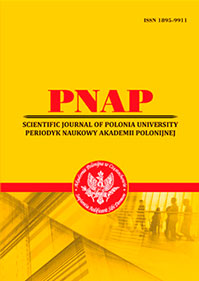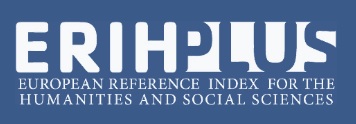RHIZOMATIC NARRATIVE POLYPHONY: CREATING POSTIRONY IN DONAL RYAN’S NOVEL «THE SPINNING HEART»
Abstract
The article analyzes the author’s stylistic technique of rhizomatic narrative polyphony as a means of structuring a polyphonic narrative. It examines the monologues of 21 characters within the context of creating post-irony in the novel “The Spinning Heart” by Irish writer Donal Ryan. It is proved that organizing a polyphonic novel with many characters-narrators who are equal in their views requires the author to use an appropriate compositional tool to individualize the monologues of all the characters and narrators without losing the central storyline. The rhizomatic nature of the narrative allows the creation of the necessary interpersonal connections between the characters without losing their narrative «significance». It is illustrated that due to the rhizomatic structure and narrative type, each of the characters expresses sincere emotions and experiences, reflects on their own traumas, and expresses a subjective attitude towards the environment, immersing themselves in honest reflections on the nature of their own internal and external conflicts, as well as childhood traumas. The content of the narrators’ monologues is characterized by intransigence, fragmentation, and illogic, with a partial loss of narrative logic and individual speech expressiveness. Exhausting the reader’s emotional reserve, each narrator speaks in detail within the monologue, trying to cover both their own experiences and the general picture of the city’s inhabitants’ life experiences. The author, under such conditions, remains far from assessing his own characters and does not grant narrative privileges to any of them, equating the tragedies of each. Hence, it is proved that rhizomatic narrative polyphony makes it possible to embody a postironic literary intention because despite the sincerity of each monologue, the characters do not communicate or intersect in dialogues within the novel. Rhizomatic narrative polyphony as a way of creating postirony in the novel emphasises the author’s postirony: remaining the characters «deaf» to other people’s experiences, the characters of Donal Ryan’s novel are unable to fully realise their sincere intentions, empathy for others and identify themselves in the multi-voiced environment of the novel.
References
2. Бабелюк О. А. Поетика постмодерністського художнього дискурсу: принципи текстової побудови : дис. д-ра філол. наук: 10.02.04. Київ, 2010. 456 с.
3. Білецька О. В. Методика дослідження графосеміотичного кодування наративної поліфонії в англомовному постмодерністському художньому тексті. Записки з романо-германської філології. Одеса : КП ОМД, Випуск 1 (36). 2016. С. 11–22.
4. Варчук Л. В. Образ оповідача в сучасній англомовній амеріндіанській прозі: лінгвокультурний аспект. Кваліфікаційна наукова праця на правах рукопису. Дисертація на здобуття ступеня вищої освіти доктора філософії за спеціальністю 035 Філологія; Київський національний лінгвістичний університет, Міністерство освіти і науки України. Київ, 2021. 230 с.
5. Ізотова Н. П. Концептотвірна функція наративної поліфонії художнього твору (на матеріалі англомовних біографічних романів XX століття) Наукові записки. Серія «Філологічні науки (мовознавство)». 2011. № 96 (1). Кіровоград : РВВ КДПУ ім. В. Винниченка, 2011. C. 87–90.
6. Кушнірова Т. В. Тип «множинного» наратора в оповідній структурі художнього тексту Вісник Харківського національного університету імені В. Н. Каразіна. Серія «Філологія». 2019. Вип. 83. С. 59–63.
7. Мацевко-Бекерська Л. В. Метамодерний горизонт гуманітарної освіти (коли відповіді чекають своїх питань) Актуальні питання лінгвістики, професійної лінгводидактики, психології і педагогіки вищої школи : зб. статей VII Міжнар. наук.-практ. конф., м. Полтава, 24–25 листопада 2022 р. С. 161–164.
8. Савчук Р. І. Наративна стратегія «дзеркало» та її концептуалізація у французькому художньому текстотворенні XVIII століття Науковий вісник Міжнародного гуманітарного університету. Серія «Філологія» : зб. наук. пр. Вип. 26. Одеса, 2017. Т. 2. С. 72–74.
9. de Salazar Asier Altuna-García (2019) Polyphony, Provincialism, Nostalgia and Involution in Post-Celtic Tiger Ireland: Donal Ryan’s The Spinning Heart, English Studies, 2012. С. 90–107.
10. Heidegger M. «On the Origin of the Work of Art.» Translated by Roger Berkowitz and Philippe Nonet. Draft, December 2006. 68 p.
11. Huang, Shan-Yun “Nostalgia and Post-Crash Irish Identity in Donal Ryan’s The Spinning Heart and Mike McCormack’s Solar Bones.” 2022. P. 73–96. URL: http://ex- position.org/wp-content/uploads/2023/01/06-Shan-Yun-Huang.pdf
12. Lodge D. After Bakhtin: Essays on Fiction and Criticism. London : Routledge 1990. 198 p.
13. Mulrennan M. “Post-Celtic Tiger Rural Ireland, Internal Exile and Male Identity in the Fiction of Colin Barrett and Donal Ryan. An Analysis.” The Honest Ulsterman (February) 2016. URL: https://humag.co/features/post-celtic-tiger-rural-ireland-internal-exile-and- male-identity-in-the-fiction-of-colin-barrett-and-donal-ryan
14. Ryan D. The Spinning Heart. Transworld Ireland, 2012. 160 p.
15. Williams P. Writing the Polyphonic Novel Writing in Practice. 2015. Vol.1 ; National Association of Writers in Education. 9 p.
 ISSN
ISSN 


.png)



